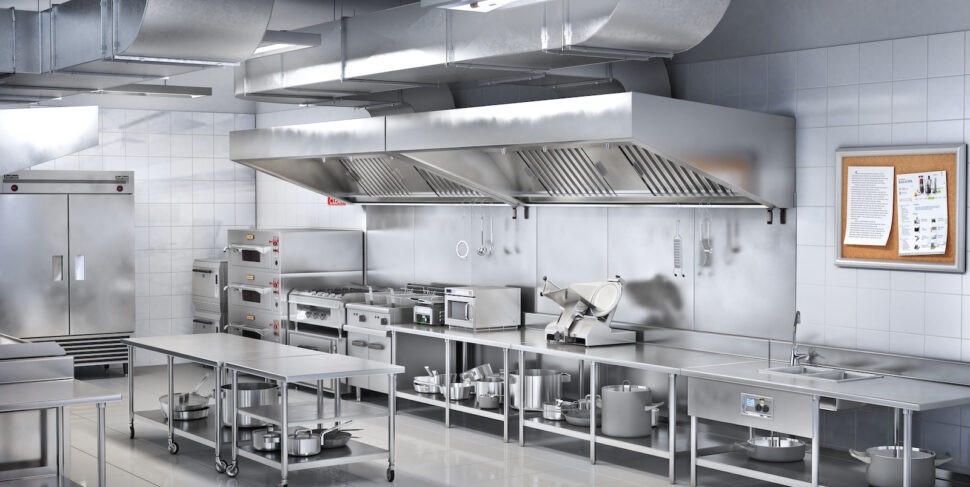Fast food restaurants represent a dynamic and often profitable sector within the food industry. For entrepreneurs considering entering the culinary world, opening a fast food establishment can be an attractive venture, characterized by potentially high profit margins and relatively streamlined operations. This business model offers a pathway to success in a competitive market by focusing on efficiency and customer convenience.
This guide provides a ten-step roadmap for individuals looking to open a fast food restaurant, outlining essential strategies, and highlighting the tools and technologies necessary to achieve sustained profitability.
Is Opening a Fast Food Restaurant a Profitable Venture?
Fast food restaurants typically enjoy a profit margin ranging from approximately 6% to 9%. This figure is notably higher than that of full-service restaurants. Several factors contribute to this increased profitability, including a faster customer turnover rate, lower ingredient costs due to bulk purchasing and standardized menus, and reduced staffing requirements.
For those contemplating restaurant ownership, the fast food model emerges as a potentially lucrative option, offering a solid foundation for financial success in the food service industry.
10 Steps to Open a Fast Food Restaurant
Step 1: Develop a Robust Fast Food Restaurant Business Plan
The foundational step in opening any food business, especially a fast food restaurant, is crafting a detailed business plan. This document serves as your operational blueprint, guiding you through each stage of development and ensuring you stay on track.
The specific type of fast food restaurant you envision will heavily influence your business plan. Consider the service model: Will it be primarily counter service, incorporate a drive-thru, offer dine-in seating, or focus solely on takeout and delivery?
Once you’ve defined your restaurant concept, your business plan should encompass the following key sections:
- Executive Summary: A concise overview of your business concept, mission, and objectives.
- Target Market Analysis: Detailed demographics and psychographics of your ideal customers. Understanding your target audience is crucial for tailoring your menu and marketing efforts.
- Industry and Competitive Analysis: Research the fast food market trends, identify your main competitors, and analyze their strengths and weaknesses. This will help you find your niche and competitive advantage.
- Financial Projections: Realistic estimates of startup costs, operating expenses, revenue forecasts, and profitability analysis. Secure funding and manage your finances effectively.
- Marketing and Sales Strategy: Outline your plans for attracting and retaining customers, including branding, advertising, online presence, and promotional activities.
- Management Team and Staffing: Define your organizational structure, management roles, and staffing needs. Plan for recruitment, training, and employee management.
- Operational Plan: Detail your day-to-day operations, including supply chain management, food preparation processes, customer service procedures, and technology integration.
- Company Policies and Procedures: Establish guidelines for employee conduct, customer service standards, hygiene protocols, and legal compliance.
- Supplier and Vendor Selection: Identify reliable suppliers for food ingredients, equipment, and other essential supplies. Negotiate favorable terms and ensure consistent quality.
Step 2: Strategically Choose Your Fast Food Restaurant Location
Location is paramount for fast food businesses. A prime location can significantly impact visibility, customer traffic, and overall success. When evaluating potential locations, consider these critical factors:
- Accessibility and Visibility: Is the location easily accessible by car, public transport, and pedestrians? Is it prominently visible from main roads or high-traffic areas? Ensure ample parking space and clear signage.
- Foot Traffic: Is the area characterized by high pedestrian traffic throughout the day, such as near shopping centers, business districts, tourist attractions, or residential areas? High foot traffic translates to potential walk-in customers.
- Competition: Analyze the density of existing fast food restaurants in the vicinity. While some competition is healthy, excessive saturation might dilute your customer base. Look for areas with unmet demand or opportunities to differentiate yourself.
- Demographics and Local Market: Does the local demographic align with your target market? Consider factors like age groups, income levels, lifestyle, and dining preferences.
- Rent and Lease Terms: Evaluate the cost of rent, lease terms, and associated expenses. Negotiate favorable lease agreements and consider long-term affordability.
- Zoning and Regulations: Verify local zoning regulations and ensure the location permits restaurant operations, specifically fast food services. Comply with all building codes and health and safety standards.
- Growth Potential: Assess the future development prospects of the area. Is it an area experiencing growth in population, infrastructure, or commercial activity? Consider long-term potential and scalability.
Step 3: Secure Necessary Funding and Investment
The initial investment required to open a fast food restaurant can vary. Startup costs can range, but on average, you might expect to invest around $19,815. If you require external funding, explore these options:
- Small Business Loans: Banks and financial institutions offer loans specifically designed for small businesses. Prepare a strong loan application with a solid business plan and financial projections.
- Grants: Explore government grants or grants from private organizations that support small businesses and entrepreneurship. Grants can provide funding without requiring repayment.
- Lines of Credit: A business line of credit offers flexible access to funds as needed, which can be useful for managing cash flow and unexpected expenses.
- Crowdfunding: Utilize online crowdfunding platforms to raise capital from a large number of individuals in exchange for rewards or equity.
- Investors: Seek investment from angel investors or venture capitalists who are interested in supporting promising businesses in the food industry.
Step 4: Obtain Licenses, Permits, and Insurance
Compliance with regulations is crucial. Before opening your doors, ensure you have secured all necessary licenses and permits. These typically include:
- Food Service License/Permit: Required to operate a food establishment and ensure compliance with food safety standards.
- Business License: A general license to operate a business within your locality.
- Employer Identification Number (EIN): Required for tax purposes if you plan to hire employees.
- Building and Zoning Permits: Verify compliance with building codes, zoning regulations, and fire safety standards.
- Signage Permits: Permits for exterior signage to advertise your restaurant.
- Alcohol License (if applicable): If you plan to serve alcohol, obtain the necessary liquor license.
- Music License (if applicable): If you plan to play music in your restaurant, acquire a music license to comply with copyright laws.
Additionally, comprehensive insurance is essential to protect your business, employees, and customers. Consider these types of insurance:
- General Liability Insurance: Covers bodily injury and property damage claims.
- Workers’ Compensation Insurance: Covers medical expenses and lost wages for employees injured on the job.
- Property Insurance: Protects your restaurant building, equipment, and inventory from damage or loss.
- Business Interruption Insurance: Covers lost income and expenses if your restaurant is temporarily closed due to unforeseen events.
Step 5: Purchase Essential Fast Food Restaurant Equipment
Equipping your kitchen and service area with the right equipment is fundamental for efficient operations. Essential equipment includes:
- Cooking Equipment: Fryers, ovens, grills, microwaves, toasters, ranges.
- Food Preparation Equipment: Mixers, food processors, slicers, knives, cutting boards, prep tables.
- Display and Holding Equipment: Heated display cases, food warmers, soup wells.
- Refrigeration and Freezing Equipment: Walk-in coolers, freezers, reach-in refrigerators.
- Beverage Dispensers: Soda fountains, coffee machines, tea dispensers, juice dispensers.
- Serving and Dining Supplies: Smallwares (cups, plates, cutlery, bowls, napkins, straws), trays, condiment dispensers.
- Dishwashing and Sanitation: Commercial dishwashers, sinks (handwashing, food prep, dishwashing), sanitizing solutions, cleaning supplies.
- Point of Sale (POS) System: Cash registers, credit card processing terminals, order management software.
Step 6: Optimize Restaurant Layout and Design for Customer Appeal
Restaurant layout and design significantly impact customer experience and operational efficiency. Create an inviting and functional space by focusing on:
- Appealing Entrance: Design an inviting entrance using eye-catching signage, vibrant menu boards, effective lighting, and attractive decorations. First impressions are crucial.
- Color Psychology: Consider using warm and stimulating colors in your interior decor. Red, for instance, is known to stimulate appetite and is frequently used in fast food branding.
- Ambiance and Music: Play upbeat and welcoming music throughout the restaurant, not just at the counter. Music enhances the dining atmosphere, but keep the volume at a comfortable level for conversation.
- Efficient Queue Management: Design the counter area to accommodate customer queues comfortably without disrupting seated diners. Ensure clear lines of sight to menu boards and ordering stations.
- Dedicated Pickup Zones: If offering delivery or takeout, create a separate, clearly marked area for delivery drivers or customers picking up orders. This streamlines traffic flow and avoids congestion in the main customer area.
- Comfortable Seating (if applicable): If you offer dine-in, provide comfortable and functional seating arrangements. Consider a mix of seating types, such as booths, tables, and counter seating.
Step 7: Craft a Streamlined and Appealing Fast Food Menu
Menu design is critical in fast food. Menus should be concise, easy to navigate, and focused on popular, quickly prepared items. Consider these aspects:
- Menu Simplicity: Limit menu options to focus on speed and efficiency. Offer a core selection of popular fast food items like burgers, fries, sandwiches, salads, and beverages.
- Combo Meals and Value Offers: Create combo meals and value deals to encourage larger orders and provide customers with cost-effective options.
- Customization Options: Allow for some level of customization, such as adding toppings, sides, or drink choices, to cater to individual preferences.
- Digital Menus and QR Codes: Implement digital menu boards and QR code menus for tableside ordering. Digital menus are easily updatable, cost-effective in the long run, and can enhance customer experience.
- Menu Engineering: Strategically arrange menu items to highlight high-profit items and encourage customers to make profitable choices. Use visual cues, descriptions, and pricing psychology to optimize menu performance.
Step 8: Select Essential Technology and Tools for Efficiency
Beyond kitchen equipment, technology plays a vital role in modern fast food operations. Invest in systems that streamline operations and enhance customer service:
- Point of Sale (POS) System: A robust POS system is essential for order taking, payment processing, inventory management, sales tracking, and reporting. Choose a system tailored for fast food operations.
- Kitchen Display System (KDS): Implement a KDS to digitally display orders in the kitchen, improving order accuracy, speed, and communication between front-of-house and back-of-house staff.
- Online Ordering System: Offer online ordering for takeout and delivery through your website and mobile app. Integrate online ordering with your POS and KDS for seamless order flow.
- Mobile Ordering App: Develop a mobile app to enable customers to order ahead, customize orders, pay online, and earn loyalty rewards.
- Inventory Management Software: Utilize inventory management software to track stock levels, manage supplier orders, minimize waste, and optimize food costs.
- Customer Relationship Management (CRM): Implement a CRM system to manage customer data, track customer preferences, personalize marketing efforts, and build customer loyalty.
Step 9: Build and Train a High-Performing Team
Your staff is the face of your fast food restaurant. Recruit, train, and retain a motivated and customer-focused team.
- Recruitment and Hiring: Develop a clear hiring process to attract and select qualified candidates. Look for individuals with strong customer service skills, teamwork abilities, and a positive attitude.
- Comprehensive Training Program: Implement a structured training program to equip new hires with the necessary skills in food preparation, customer service, POS system operation, hygiene protocols, and safety procedures.
- Employee Motivation and Retention: Create a positive and supportive work environment. Offer competitive wages, benefits, opportunities for advancement, and employee recognition programs to boost morale and reduce turnover.
- Performance Management: Establish clear performance expectations, provide regular feedback, and conduct performance reviews to identify areas for improvement and reward high-performing employees.
Step 10: Implement Effective Fast Food Marketing Strategies
A well-defined marketing strategy is essential to attract customers and build brand awareness. Consider these marketing techniques:
- Brand Building: Develop a strong brand identity, including a memorable logo, name, color scheme, and brand voice. Maintain brand consistency across all platforms.
- Social Media Marketing: Establish a strong presence on relevant social media platforms. Engage with followers, share appealing food photos, run contests, and promote special offers.
- Local SEO (Search Engine Optimization): Optimize your online presence for local search to ensure your restaurant appears prominently in local search results when people search for “fast food near me” or related keywords.
- Online Advertising: Utilize online advertising platforms like Google Ads and social media ads to target potential customers in your local area.
- Local Partnerships: Collaborate with local businesses, schools, and community organizations to increase brand visibility and reach new customers.
- Loyalty Programs: Implement a customer loyalty program to reward repeat customers and encourage them to return.
- Email Marketing: Build an email list and send out regular newsletters with promotions, new menu items, and restaurant updates.
- Influencer Marketing: Partner with local food bloggers or social media influencers to promote your restaurant to their followers.
- Community Events: Participate in local festivals, events, and community gatherings to increase brand awareness and reach a wider audience.
How to Run a Successful Open Fast Food Restaurant
Establish a User-Friendly Restaurant Website for Online Sales
In today’s digital age, a website is crucial, especially if you offer online ordering. Your website should be designed for conversion, making it easy for customers to browse your menu and place orders.
Utilize user-friendly website builders specifically designed for restaurants. These platforms often offer drag-and-drop interfaces, pre-designed templates, and built-in online ordering functionality. Ensure your website is mobile-responsive and optimized for search engines.
Offer Regular Promotions and Special Deals
Promotions and special offers are powerful tools for attracting customers and boosting sales in the competitive fast food market. Implement a variety of promotional strategies:
- Discount Promotions: Offer percentage discounts, dollar-off discounts, or limited-time offers on specific menu items or combo meals.
- Meal Bundles: Create attractive meal bundles that offer a combination of popular items at a discounted price.
- Free Delivery or Reduced Delivery Fees: Offer free delivery or reduced delivery fees during off-peak hours or for orders above a certain amount.
- Loyalty Rewards: Reward repeat customers with exclusive discounts, free items, or points-based loyalty programs.
- Seasonal Promotions: Develop seasonal promotions and menu items to capitalize on holidays, special events, or seasonal ingredients.
Consider Implementing a Secret Menu
Secret menus can generate buzz and exclusivity around your fast food restaurant. A secret menu consists of dishes that are not publicly advertised but are available upon request.
- Create Unique Items: Develop unique and intriguing menu items that are not part of your standard menu.
- Generate Word-of-Mouth: Secret menus encourage word-of-mouth marketing as customers share their “insider” knowledge.
- Reward Loyal Customers: Secret menus can be offered as a perk to loyal customers or those “in the know.”
- Social Media Teasers: Hint at your secret menu on social media to pique curiosity and drive customer inquiries.
Utilize Email Marketing to Enhance Customer Loyalty
Customer retention is as important as customer acquisition. Email marketing is an effective tool for building customer loyalty and driving repeat business.
- Collect Email Addresses: Encourage customers to sign up for your email list through your website, in-store promotions, or online ordering platforms.
- Personalized Email Campaigns: Segment your email list and send targeted email campaigns based on customer preferences, purchase history, or demographics.
- Promotional Emails: Send out regular emails with promotions, discounts, new menu item announcements, and special event invitations.
- Loyalty Program Updates: Keep loyalty program members informed about their points balance, rewards, and exclusive offers through email.
- Feedback and Surveys: Use email to solicit customer feedback and conduct surveys to improve your services and menu offerings.
Engage Followers with Fast Food Social Media Campaigns
Social media is a powerful platform for engaging with customers, building brand awareness, and driving traffic to your fast food restaurant.
- Visually Appealing Content: Post high-quality photos and videos of your food, restaurant ambiance, and behind-the-scenes glimpses of your operations.
- Interactive Content: Run contests, polls, quizzes, and Q&A sessions to engage your followers and encourage interaction.
- User-Generated Content: Encourage customers to share photos of their food and dining experiences and feature user-generated content on your social media channels.
- Run Targeted Ads: Utilize social media advertising platforms to target specific demographics and geographic areas with your ads.
- Engage in Conversations: Respond promptly to comments, messages, and reviews on social media. Engage in conversations and build relationships with your followers.
Final Thoughts on Opening a Fast Food Restaurant
Opening a fast food restaurant is a significant undertaking, but with careful planning, strategic execution, and a focus on customer satisfaction, it can be a rewarding and profitable venture. By following these steps and continuously adapting to market trends, you can build a successful and thriving fast food business.
Share:
Laura-Andreea VoicuLaura-Andreea Voicu is an experienced content writer with a knack for marketing and SEO. She creates guides and resources designed to help restaurants grow their presence online and boost sales.
She has been featured on the Oracle Food and Beverage Blog and wrote for Search Engine Journal, Clutch, Sender, Venngage, Quickbooks, and many more.
Find me on LinkedIn.


